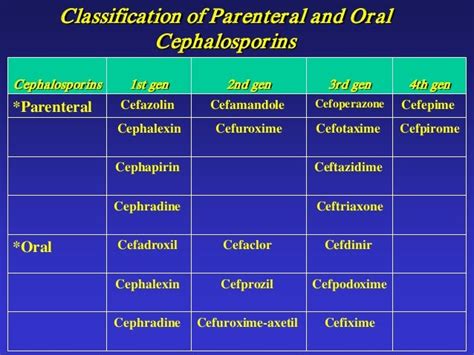Intro
Discover Cefdinir, a broad-spectrum antibiotic treating bacterial infections, with insights on dosage, side effects, and interactions, including pneumonia, skin infections, and more, for effective disease management.
The world of antibiotics is vast and complex, with numerous medications available to combat various bacterial infections. One such antibiotic that has gained significant attention in recent years is Cefdinir, a third-generation cephalosporin antibiotic. In this article, we will delve into the world of Cefdinir, exploring its importance, benefits, and working mechanisms, as well as providing practical examples and statistical data to enhance our understanding of this versatile antibiotic.
Cefdinir is a semi-synthetic antibiotic that has been widely used to treat a range of bacterial infections, including respiratory tract infections, skin infections, and urinary tract infections. Its broad-spectrum activity and effectiveness against Gram-positive and Gram-negative bacteria have made it a popular choice among healthcare professionals. Moreover, Cefdinir has been shown to be well-tolerated and safe, with a low incidence of adverse effects, making it an attractive option for patients of all ages.
The rise of antibiotic-resistant bacteria has become a significant concern in recent years, with many antibiotics losing their effectiveness against certain strains of bacteria. However, Cefdinir has been shown to retain its potency against many resistant bacteria, making it a valuable addition to the arsenal of antibiotics available to healthcare professionals. Furthermore, Cefdinir has been demonstrated to have a synergistic effect when used in combination with other antibiotics, enhancing its bactericidal activity and improving treatment outcomes.
Cefdinir Mechanism of Action

Cefdinir Spectrum of Activity
Cefdinir has a broad spectrum of activity against a range of Gram-positive and Gram-negative bacteria, including Streptococcus pneumoniae, Haemophilus influenzae, and Moraxella catarrhalis. Its activity against these bacteria makes it an effective treatment option for respiratory tract infections, such as pneumonia, bronchitis, and sinusitis. Additionally, Cefdinir has been shown to be effective against skin and soft tissue infections, including those caused by Staphylococcus aureus and Streptococcus pyogenes.Cefdinir Uses and Indications

Cefdinir has also been used off-label for the treatment of other bacterial infections, including Lyme disease and pertussis.
Cefdinir Dosage and Administration
Cefdinir is available in oral capsule and suspension forms, with dosages ranging from 300 to 600 mg per day, depending on the indication and severity of the infection. The usual dosage for adults is 300 mg every 12 hours or 600 mg every 24 hours, while the dosage for children is based on their weight and age.Cefdinir Side Effects and Interactions

Cefdinir can also interact with other medications, including:
- Antacids, which can reduce the absorption of Cefdinir
- Probenecid, which can increase the levels of Cefdinir in the blood
- Warfarin, which can increase the risk of bleeding when used with Cefdinir
Cefdinir Resistance and Susceptibility
The rise of antibiotic-resistant bacteria has become a significant concern in recent years, with many antibiotics losing their effectiveness against certain strains of bacteria. However, Cefdinir has been shown to retain its potency against many resistant bacteria, including methicillin-resistant Staphylococcus aureus (MRSA) and penicillin-resistant Streptococcus pneumoniae.Cefdinir vs Other Antibiotics

While each of these antibiotics has its own unique characteristics and indications, Cefdinir is often preferred due to its broad-spectrum activity and effectiveness against resistant bacteria.
Cefdinir in Pregnancy and Breastfeeding
Cefdinir is classified as a category B medication, meaning that it is generally considered safe for use during pregnancy. However, as with any medication, it should be used with caution and under the guidance of a healthcare professional. Cefdinir is also excreted in breast milk, but the levels are generally considered to be low and safe for infants.Cefdinir Conclusion and Future Directions

We invite you to share your thoughts and experiences with Cefdinir in the comments section below. Have you used Cefdinir to treat a bacterial infection? What were your experiences with this medication? Share your story and help others understand the benefits and limitations of Cefdinir.
What is Cefdinir used for?
+Cefdinir is used to treat a range of bacterial infections, including respiratory tract infections, skin and soft tissue infections, and urinary tract infections.
How does Cefdinir work?
+Cefdinir works by inhibiting the synthesis of the bacterial cell wall, ultimately leading to the death of the bacterial cell.
What are the common side effects of Cefdinir?
+Common side effects of Cefdinir include diarrhea, nausea and vomiting, abdominal pain, headache, and rash.
Can I take Cefdinir with other medications?
+Cefdinir can interact with other medications, including antacids, probenecid, and warfarin. It is essential to consult with a healthcare professional before taking Cefdinir with other medications.
Is Cefdinir safe for use during pregnancy and breastfeeding?
+Cefdinir is classified as a category B medication, meaning that it is generally considered safe for use during pregnancy. However, it should be used with caution and under the guidance of a healthcare professional. Cefdinir is also excreted in breast milk, but the levels are generally considered to be low and safe for infants.
